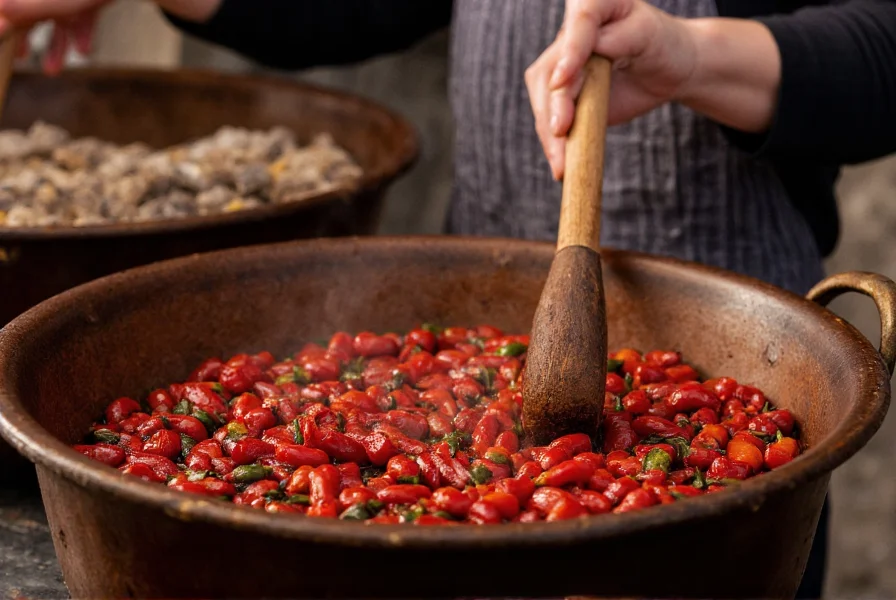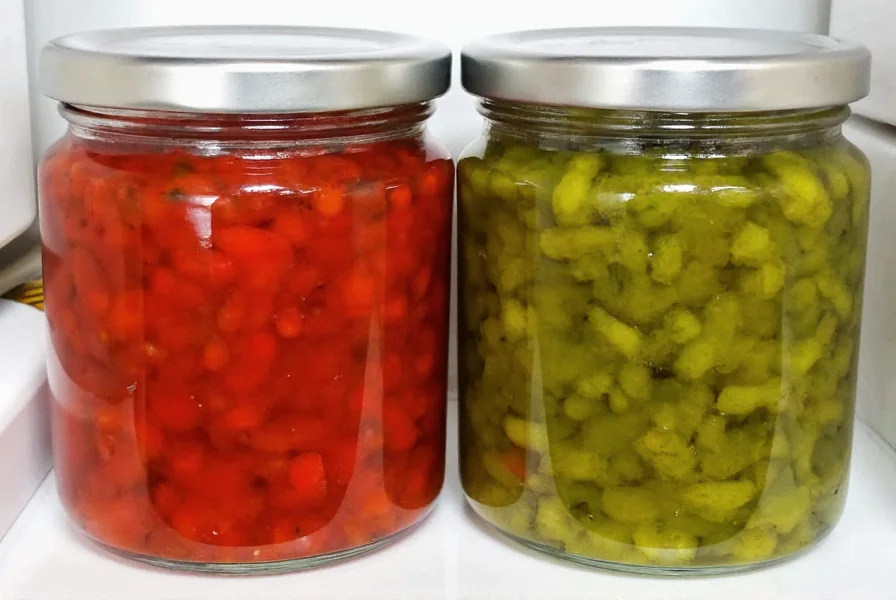Turkish pepper paste isn't just another hot sauce—it's the culinary heartbeat of Anatolian cooking. This versatile ingredient transforms ordinary dishes into authentic Turkish experiences through its rich umami depth and complex flavor profile. Unlike many Western hot sauces that prioritize heat, traditional biber salçası focuses on capturing the natural sweetness of ripe peppers through careful reduction.
What Exactly Is Turkish Pepper Paste?
Known locally as biber salçası, this essential Turkish pantry staple comes in two primary varieties:
- Kırmızı biber salçası (red pepper paste) - Made from sweet red peppers like isot or kapya varieties
- Yeşil biber salçası (green pepper paste) - Prepared from green peppers, offering a fresher, grassier flavor
The production process involves roasting or boiling peppers until soft, then removing skins and seeds before slow-cooking the mixture for hours until it reduces to a thick, spreadable consistency. Authentic versions contain only peppers, tomatoes (in some regional variations), and salt—no vinegar, oil, or preservatives.
| Type | Pepper Variety | Flavor Profile | Common Uses |
|---|---|---|---|
| Red Pepper Paste | Sweet red peppers (kapya, isot) | Rich, sweet, deep umami | Köfte, stews, menemen |
| Green Pepper Paste | Green peppers (sivri, çarliston) | Fresh, vegetal, mild heat | Yogurt sauces, egg dishes |
Traditional Production Methods vs. Commercial Versions
In Turkish households, families traditionally prepare pepper paste during late summer when peppers reach peak ripeness. The labor-intensive process involves:
- Roasting peppers over open flame or boiling until skins blister
- Peeling and deseeding the softened peppers
- Slow-cooking the pulp for 6-8 hours while stirring constantly
- Packaging the thickened paste in sterilized jars for year-round use
Commercial versions often shortcut this process with additives. When selecting authentic turkish pepper paste, check the ingredient list—only peppers, tomatoes (optional), and salt should appear. Avoid products containing vinegar, oil, or preservatives, which alter both flavor and cooking properties.

Why Turkish Pepper Paste Outperforms Similar Condiments
Many home cooks confuse Turkish pepper paste with other regional condiments, but key differences exist:
- vs. Harissa: North African harissa uses chili peppers, garlic, and spices with vinegar for preservation, creating a much hotter, tangier product
- vs. Ajvar: Balkan ajvar includes eggplant and bell peppers, resulting in a sweeter, milder spread typically served as a dip
- vs. Romesco: Spanish romesco incorporates nuts and bread, creating a thicker, nuttier sauce
The unique characteristics of turkish biber salçası come from its singular focus on pepper flavor without competing ingredients. This purity allows it to function as both flavor enhancer and thickening agent in cooking.
Practical Uses in Everyday Cooking
Understanding how to use turkish pepper paste in recipes unlocks authentic Turkish flavors. Unlike hot sauces added at the end, biber salçası works best when incorporated early in the cooking process:
- Add 1-2 tablespoons to meat mixtures for köfte (Turkish meatballs) before shaping
- Stir into tomato-based stews during the sauté phase to deepen flavor
- Mix with yogurt for a quick cacık (Turkish tzatziki) sauce
- Spread thinly on flatbread before adding toppings for pide
For those substituting turkish pepper paste, combine roasted red peppers, a touch of tomato paste, and a pinch of paprika—but recognize that the complex flavor development from traditional slow-cooking remains unmatched.
Nutritional Benefits Beyond Flavor
Beyond its culinary value, Turkish pepper paste offers notable health benefits. The slow-cooking process concentrates capsaicinoids and carotenoids while preserving vitamin C content better than quick-cooked alternatives. Traditional preparation without added oils makes it naturally low in fat while providing:
- High levels of vitamins A and C from ripe peppers
- Antioxidants from the Maillard reaction during slow reduction
- Natural umami compounds that reduce need for added salt
Storage Tips for Maximum Freshness
Proper storage ensures your homemade turkish pepper paste lasts through the year:
- Refrigerate opened jars and use within 3 months
- Create a protective oil layer on top of homemade paste
- Freeze in ice cube trays for portioned cooking use
- Always use clean utensils to prevent contamination

Simple Recipe: Authentic Turkish Köfte with Pepper Paste
This traditional meatball recipe demonstrates how turkish pepper paste enhances ground meat dishes:
- 500g ground lamb or beef
- 2 tbsp red pepper paste
- 1 small onion, grated
- 1 egg
- 2 cloves garlic, minced
- 1 tsp cumin
- Salt and pepper to taste
Mix all ingredients gently (don't overwork), form into oval shapes, and grill or pan-fry. The pepper paste keeps the meat moist while adding signature Turkish flavor without heat.
Frequently Asked Questions
Is Turkish pepper paste spicy?
Traditional Turkish pepper paste made from sweet red peppers (kapya) has minimal heat—more sweet and umami than spicy. Green varieties can have mild heat, but authentic biber salçası focuses on flavor depth rather than spiciness. This distinguishes it from hotter condiments like harissa.
Can I make Turkish pepper paste at home without special equipment?
Yes, you only need peppers, salt, and time. Roast peppers over a gas flame or under a broiler until charred, place in a covered bowl to steam, then peel. Simmer the peeled peppers with a small amount of tomato (optional) for 4-6 hours, stirring occasionally, until thickened. A heavy-bottomed pot prevents burning during the slow reduction process.
How does Turkish pepper paste differ from tomato paste in cooking?
While both are concentrated pastes, Turkish pepper paste provides distinct pepper flavor and color without tomato's acidity. It contains natural sugars from roasted peppers that caramelize beautifully when sautéed, creating deeper flavor foundations for stews and meat dishes compared to tomato paste's brighter, more acidic profile.
What dishes absolutely require Turkish pepper paste for authenticity?
Certain Turkish classics rely on biber salçası for authentic flavor: kıymalı yumurta (spiced meat and eggs), acili ezme (spicy tomato dip), many regional köfte variations, and mantı (Turkish dumplings) sauces. Omitting it creates a noticeably different dish, as the paste provides the characteristic flavor base these recipes depend on.











 浙公网安备
33010002000092号
浙公网安备
33010002000092号 浙B2-20120091-4
浙B2-20120091-4